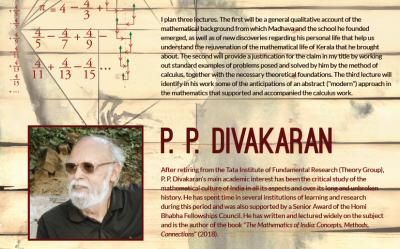



In the Early Middle Ages Islamic mathematicians were also aware of and used Archimedean methods. Attempts have been made to prove the hypothesis that the further development of the calculus in the 17 th century was stimulated by Jesuit missionaries bringing knowledge of the work of the Kerala School to Europe, however despite extensive research no evidence of transition has been found up to now. The same mathematicians also made extensive use of the method of Archimedes to determine areas and volumes.
#Who invented calculus series
The series had however already been discovered and analysed by the so-called Madhava or Kerala school of mathematics founded by Madhava who flourished in the second half of the 14 th century. At its core calculus is about summing infinite converging series, diverging series can’t be summed, and in the 17 th century several important series representing important geometrical constants such as P and trigonometrical functions such as sine and cosine were analysed and discussed by European mathematicians and named after their supposed discoverers such as Gregory, Leibniz and Newton.

However earlier than that there were interesting developments in Kerala in West India. No further progress was made in antiquity before the general decline in learning beginning in the 2 nd century CE and it was first in the High Middle Ages that integration returned to European mathematics. The Greeks were also nominally aware of the problem of determining tangents to given curves, the fundamental concept of the differential calculus, but it did not play a significant role in their mathematical considerations. Refined by possibly the greatest of all Greek mathematicians, Archimedes, it became a powerful tool for the determination of areas and volumes as well as centres of gravity and most famously for his, for the time, highly accurate determination of the value of P, the relation between the circumference and diameter of a circle. The fundamental idea behind the infinitesimal integral calculus is first recorded in the so-called method of exhaustion of the Greek mathematician Eudoxus of Cnidus who flourished at the beginning of the fourth century BCE and is used for a handful of proofs by Euclid in his Elements. What follows is not a history of calculus but a very bare and incomplete skeleton naming some of the important stations between the first appearance of concepts considered central to the calculus and the work of Newton and Leibniz. The much longer and much more correct answer is nobody, calculus wasn’t invented by a single person but evolved piece by piece over more than two thousand years. The short semi-correct answer is, both of them. There are two possible answers to the question. Now as I mentioned in my first post this was the first theme in the history of mathematics that caught my attention and over the years I have devoted a considerable amount of time and effort to investigating the subject. Being an English historian of mathematics resident in Germany I have been often asked, over the years, by people who know a little about the history of mathematics, “Who invented the calculus, Newton or Leibniz?” This is probably the most famous argument about priority of discovery and possible plagiarism in the history of science and still able to provoke nationalist sensibilities 300 years after the fact.


 0 kommentar(er)
0 kommentar(er)
